
The Sentinel is a 1977 American supernatural horror film directed by Michael Winner, and starring Cristina Raines, Chris Sarandon, Ava Gardner, Burgess Meredith, Sylvia Miles and Eli Wallach. The plot focuses on a young model who moves into a historic Brooklyn brownstone that has been sectioned into apartments, only to find that the building is owned by the Catholic diocese and is a gateway to Hell. It is based on the 1974 novel of the same name by Jeffrey Konvitz, who also co-wrote the screenplay with director Winner. It also features Christopher Walken, Jeff Goldblum, John Carradine, Jerry Orbach, Tom Berenger, Nana Visitor and Beverly D'Angelo in supporting roles.
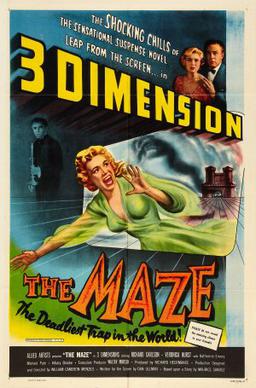
The Maze is a 1953 3-D horror film starring Richard Carlson, Veronica Hurst and Hillary Brooke. It was directed by William Cameron Menzies and distributed by Allied Artists Pictures. It was to be the second 3-D film designed and directed by William Cameron Menzies, known for his very "dimensional" style. It was his final film as production designer and director.

It's Alive is a 1974 American science fiction horror film written, produced, and directed by Larry Cohen. It stars John P. Ryan and Sharon Farrell as a couple whose infant child turns out to be a vicious mutant. The film's cast also includes James Dixon, William Wellman Jr., Shamus Locke, Andrew Duggan, Guy Stockwell, and Michael Ansara. The baby was designed and created by special effects make-up artist Rick Baker, and the film's score was composed by Bernard Herrmann.

Motel Hell is a 1980 American comedy horror film directed by Kevin Connor and starring Rory Calhoun, Nancy Parsons, and Nina Axelrod. The plot follows farmer, butcher, motel manager, and meat entrepreneur Vincent Smith, who traps travelers and harvests them for his human sausages.

Alone in the Dark is a 1982 American slasher film co-written and directed by Jack Sholder in his directorial debut, and starring Jack Palance, Martin Landau, Donald Pleasence, Dwight Schultz, and Erland Van Lidth. The plot follows a psychiatrist's family who are besieged by four escaped mental patients during a power blackout. Following Stunts and Polyester, it was one of the first films produced by New Line Cinema.

When a Stranger Calls Back is a 1993 American made-for-television psychological horror film and a sequel to the 1979 classic When a Stranger Calls which reunites stars Carol Kane and Charles Durning with director Fred Walton from the original film. It was originally broadcast on Showtime on April 4, 1993.

The Believers is a 1987 Canadian-American neo-noir thriller horror-noir film directed by John Schlesinger, starring Martin Sheen, Robert Loggia and Helen Shaver. It is based on the 1982 novel The Religion by Nicholas Conde.

The Hand is a 1981 American psychological horror film written and directed by Oliver Stone, based on the novel The Lizard's Tail by Marc Brandel. The film stars Michael Caine and Andrea Marcovicci. Caine plays Jon Lansdale, a comic book artist who loses his hand, which in turn takes on a murderous life of its own. The original film score is by James Horner, in one of his earliest projects. Warner Bros. released the movie on DVD on September 25, 2007.
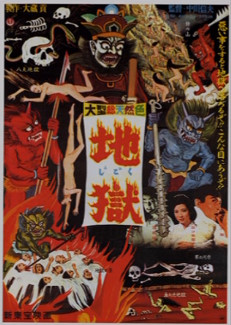
Jigoku, also titled The Sinners of Hell, is a 1960 Japanese horror film directed by Nobuo Nakagawa and produced by Shintoho. The film stars Utako Mitsuya and Shigeru Amachi, and is notable for separating itself from other Japanese horror films of the era such as Kwaidan or Onibaba due to its graphic imagery of torment in Hell. It has gained a cult film status. Shintoho declared bankruptcy in 1961, its last production being Jigoku.

Trilogy of Terror II is a 1996 American made-for-television anthology horror film and a sequel to Trilogy of Terror (1975), both directed by Dan Curtis. The film follows the formula of the original, with one female lead playing parts in each of three segments.
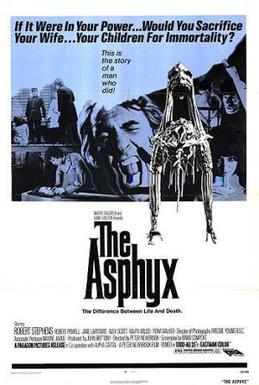
The Asphyx, also known as Spirit of the Dead and The Horror of Death, is a 1972 British horror film/science fiction film directed by Peter Newbrook and starring Robert Stephens and Robert Powell.

Celia is a 1989 Australian horror drama film written and directed by Ann Turner, and starring Rebecca Smart, Nicholas Eadie, Victoria Longley, and Mary-Anne Fahey. Set in 1957, the film centers on an imaginative young girl growing up on the outskirts of Melbourne during the Red Scare, whose fantastical view of the world around her brings about grim results.

Who Can Kill a Child?, released theatrically as Island of the Damned and Children of the Corn Tortilla in the US, and Would You Kill A Child?, Death Is Child's Play and Island of Death in the UK, is a 1976 Spanish horror film directed by Narciso Ibáñez Serrador. The film follows an English couple who find an island inhabited by maniacal children.

Home for the Holidays is a 1972 American made-for-television slasher film directed by John Llewellyn Moxey, produced by Aaron Spelling and starring Sally Field, Eleanor Parker, Julie Harris, Jessica Walter, and Walter Brennan which premiered on ABC on November 28, 1972. The plot focuses on a wealthy father on his deathbed who invites his four daughters home for Christmas and tells them he suspects his second wife of poisoning him. Shortly after, the girls learn that their stepmother was accused of killing her first husband, and they begin to fall prey to a killer dressed in a yellow rain slicker.

The Witch Who Came from the Sea is a 1976 American psychological horror film produced and directed by Matt Cimber and starring Millie Perkins, Lonny Chapman, Vanessa Brown, Peggy Feury, Rick Jason, George Buck Flower, and Roberta Collins. The film centers on an emotionally scarred woman who goes on a killing spree after taking a job as a waitress in a seaside bar. Its title refers to The Birth of Venus, which figures in the film. Dean Cundey served as associate photographer on the film.
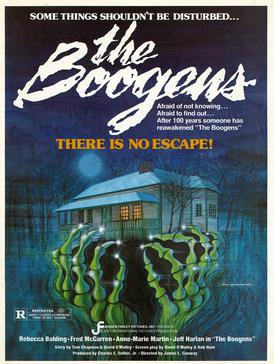
The Boogens is a 1981 American monster film directed by James L. Conway and starring Rebecca Balding, Fred McCarren, Anne-Marie Martin, Jeff Harlan, John Crawford, Med Flory, Jon Lormer, and Scott Wilkinson. The title refers to scaly turtle-like monsters that are released from an abandoned and boarded-up silver mine, and begin to wreak havoc.
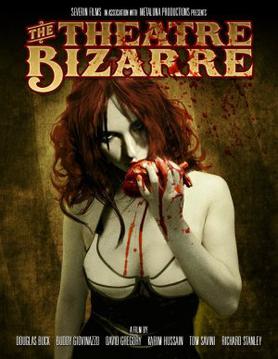
The Theatre Bizarre is a 2011 American horror anthology film. The six segments are directed by Douglas Buck, Buddy Giovinazzo, David Gregory, Karim Hussain, Tom Savini and Richard Stanley. The wraparound segments featuring Udo Kier were directed by Jeremy Kasten.

The Nesting is a 1981 American supernatural horror film directed and co-written by Armand Weston, and starring Robin Groves, Michael Lally, John Carradine and Gloria Grahame in her final film role. Its plot follows an agoraphobic novelist who rents a rural mansion that she comes to find is haunted by the prostitute victims of a mass murder that occurred there in the 1940s.

Hell High is a 1989 American slasher film written, produced, and directed by Douglas Grossman. The film centers on a school teacher who suffers a mental breakdown after being harassed and attacked by a group of her students, driving her into a homicidal rage.
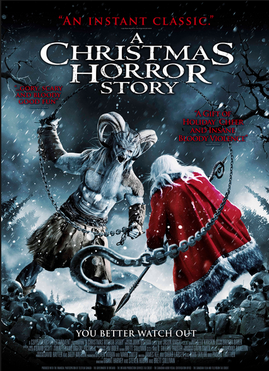
A Christmas Horror Story is a 2015 Canadian anthology horror film directed by Grant Harvey, Steven Hoban, and Brett Sullivan. It premiered on July 20, 2015, at the Fantasia International Film Festival and had a limited theatrical release on October 2, 2015, along with a VOD release. The film is a series of interwoven stories tied together by a framework story featuring William Shatner as a radio DJ.




















